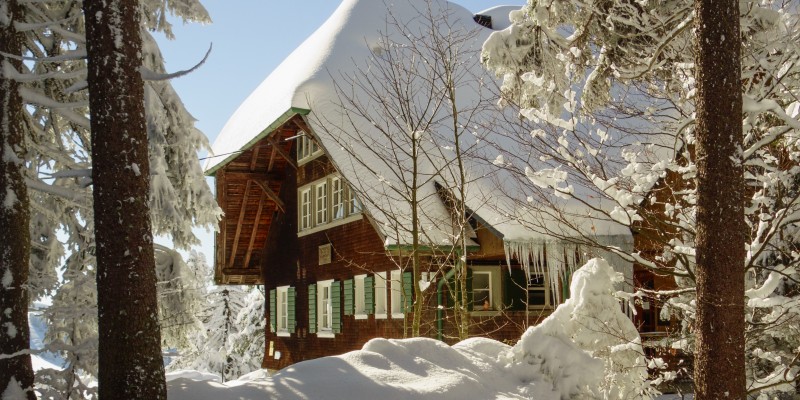Snow Buildup: Is Your Roof Up to the Task?

Snow is heavy!
Anyone who has shovelled knee-deep snow from their driveway would agree: Snow weighs a lot! Even fresh, fluffy snow can weigh upwards of 70 kg per cubic metre, and “wet” snow – or snow that has compacted under its own weight or partially melted – can easily weigh twice as much. Now, imagine for a moment, the load a significant snowfall places on the typical 140 square metre roof!
How much snow can your roof handle?
Although building codes take typical snow loads for your region into account, unusually large snowfalls or periods of continuous accumulation can place enormous stresses on your roof and its supporting structures. These stresses can vary greatly depending on the roof’s configuration (flat, steep pitch, etc.) and architectural features such as dormers and skylights.
Check for signs of stress
If a significant amount of snow has accumulated, you should check for signs of structural issues such as unusual sounds (creaks, cracks, and groans), leaks, sagging ceilings or cracking drywall and plaster. If you detect any of these problems, consult a qualified roofing/structural expert immediately!
Take action (but don’t be a hero)
Ok…so you haven’t come across any signs of impending catastrophe. That’s great news! However, it may still be advisable to relieve some of the strain on your roof. While there are a number of ways to spare your back while clearing your driveway (hiring a small army of neighbourhood kids or firing up the snowblower) your options for clearing excessive snow from your roof are considerably more limited.
Although a do-it-yourself attitude is generally an admirable trait, the wisest course of action here is to enlist the help of a qualified (and fully insured) snow removal company. Climbing onto your roof presents obvious risks at the best of times, but venturing onto a snow-covered roof is – to put it simply – a very, very bad idea. Not only do you risk damaging your roof, but you also risk serious personal injury (think: “avalanche”).
Be proactive
Instead of waiting for the next “Snowmageddon” to hit, have your roof inspected before the winter weather arrives to identify potential issues – signs of previous damage from heavy snow, leaks, wood rot, etc. – and have any necessary repairs or reinforcement performed by a qualified roofing expert.
Be prepared
Even if your roof is in tip-top shape, you should still have a plan in place for the next major snowfall. This should include a snow removal strategy – along with enough food, water, batteries, blankets and other critical supplies – to keep your home and your family safe and sound.
Tags: Flat Roof, Sloped Roof, Snow Buildup, Snow Damage, Snow Removal